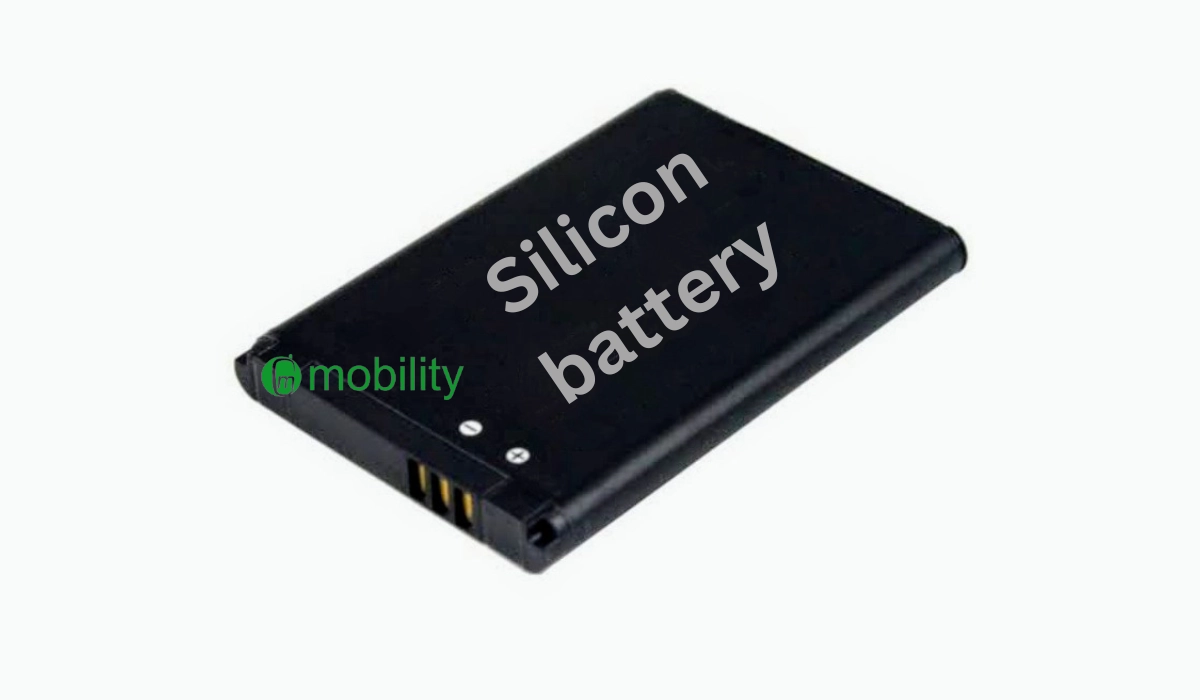Silicon battery technology offers performance advantages for smartphones and electric vehicles (EVs), but at what cost?

The premise of new Silicon battery technology is that silicon promises better capacity, longer-range, and faster-charging, than batteries with traditional graphite anodes. I explain things below.
Table of Contents
How batteries work
In simple terms, a battery is a device that stores and provides electricity, and it does so by using electrochemical reactions. There are three main components of a battery:
- Anode: The electrode where oxidation (loss of electrons) takes place during discharge. Common materials for anodes include graphite or metals. The anode is where much of the focus of current silicon battery technology is focused, as we shall see further down the article. Remember: the anode.
- Cathode: The electrode where reduction (gain of electrons) occurs during discharge. Cathode materials vary and can include metals like lithium, cobalt, or manganese, depending on the type of battery.
- Electrolyte: A substance that allows ions to move between the anode and cathode, facilitating the flow of electric current. The electrolyte is usually a liquid or a gel containing ions.
When you connect an external device that needs power to the battery circuit, charged ions start to flow from the anode to the cathode through the electrolyte. This creates a potential difference, and electrons then move from the battery to your connected gadget, providing power.
From Lithium-ion batteries to Silicon batteries
Lithium-ion batteries have been popular for decades now. In this type of battery, the cathode is commonly composed of a lithium metal oxide, such as lithium cobalt oxide or lithium iron phosphate. The anode is made from some type of carbon, such as graphite, and the electrolyte is a lithium salt. Remember that our focus here is the anode.
Graphite has an upper limit in capacity of 372 mAh/g. On the other hand, pure crystalline silicone has a theoretical capacity of 3600 mAh/g, roughly ten times that of graphite. So, it makes sense to switch from graphite to silicon; right? Yes, but there is a problem: when charged and discharged, silicon changes volume. The implication of this is that using pure silicon anodes will result in swelling and buckling with each charge and discharge cycle, and eventually self-destruction. A battery with pure silicon anodes would fail.
The solution is a new type of battery using a new composite silicon-carbon material for the anode. Adding silicon to the graphite increases the capacity of the anode. Currently, commercial silicon-carbon batteries have a capacity of around 550 mAh/g. The resulting increase in capacity is significant to make a difference in smartphone battery capacity.
Some call this new battery type silicon-carbon composite anode battery or silicon-carbon battery. Some also call it lithium-silicon battery. The terminologies are still evolving. But it is the most prevalent type of silicon battery technology around today in 2024 and the only one in use commercially (to the best of my knowledge).
In essence, current silicon battery technology is about graphite anodes being replaced with silicon-based anodes. But there are other approaches or types of silicon-based battery technology. Let’s have a look at them, quickly.
Types of Silicon Battery Technology
Listed below are some of the most promising types of silicon-based batteries being developed today:
Lithium-Silicon or Silicon-Carbon Batteries: As already mentioned above, these batteries use a silicon-carbon composite as the anode material instead of graphite. Silicon has a much larger specific capacity (up to 3600 mAh/g) compared to graphite. However, challenges like volume expansion during lithium insertion and high reactivity in the charged state have hindered commercial adoption. The silicon-carbon composite anode uses small amounts of silicon (up to 10% of the anode) to enhance performance. This battery type is already commercially available.
Solid-State Silicon Batteries: This approach is based on lithium-ion batteries but modified to use a solid electrolyte, solid cathode, and silicon-based solid anode. This silicon battery technology offers potential advantages in terms of energy density and safety. It is still in experimental phase.
Graphene-Encapsulated Silicon Microparticles: This approach uses a method of encapsulate silicon microparticles in a graphene shell, thus improving stability, confines fractured particles, and enhances energy density. These microparticles reached an impressive energy density of 3300 mAh/g. This is still in development, as well.
Silicon-Air Batteries: Here, the anodes are a combination of silicon and oxygen. While still in research stages as well, silicon-air batteries hold promise. These batteries could offer high energy density and environmental benefits.
Smartphones with silicon battery technology
There are not a lot of phone brands adopting silicon battery technology yet. As a matter of fact, as at the time of writing this article, only two known smartphone brands use it – Honor and OnePlus. They have used silicon battery technology in the following smartphones:
Honor Magic 6 Pro: Released in January 2024, the Magic 6 Pro features a second-generation silicon-carbon battery. It boasts a 5600 mAh capacity, 80W wired SuperCharge, and 66W wireless SuperCharge speeds. Remarkably, it survived extreme conditions, including a flight to over 16,000 ft and five days in a freezer, still running at over 10% battery.
OnePlus Ace 3 Pro: This 2024 smartphone features a 6100mAh battery that uses silicon-carbon anodes, as well as 100W wired fast charging. It is the first smartphone to use the new Glacier battery developed by OnePlus and CATL, and which will be used in newer OnePlus phones.
Honor Magic 5 Pro: The predecessor to the Magic 6 Pro, the Magic 5 Pro, also utilized a silicon-carbon battery. It demonstrated impressive performance, especially in low temperatures.
Electric vehicles (EVs) are also beenficiaries of silicon battery technology. Tesla uses silicon-carbon batteries in its electric vehicles (EVs).